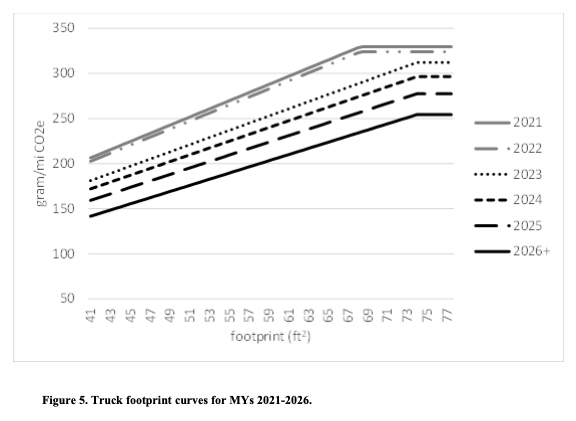New EPA Standards May Push More Americans To Purchase EVs by 2032

The Environmental Protection Agency (EPA) has released what many are claiming to be the strictest emissions rules for new cars and light trucks. These new EPA standards would aim to “improve air quality for communities across the nation, especially communities that have borne the burden of polluted air.” According to a statement released by the EPA, following these new standards would reduce the United States’ annual CO2 emissions by approximately 10 billion tons and reduce its dependence on oil imports by 20 billion barrels.
New EPA Standards Won’t Ban Gas-Powered Vehicles
While many U.S. states have been proposing banning the sale of new gas-powered vehicles by 2035, the EPA’s new rules are not outlawing the sale of new vehicles with internal-combustion engines. Instead, this means that all new vehicles with model years 2027 and up will need to meet these standards with how they deal with CO2, Nitrogen Oxide, and other greenhouse gases. This will apply to all new EVs, hybrids, and fuel-cell vehicles.
New EPA Standards For Light and Medium-Duty Vehicles
According to the proposal, auto manufacturers producing new vehicles with model years 2027 and up must meet a certain CO2 level. New cars and trucks would have to leave a carbon footprint within a certain range in order to meet these new standards.


For the years 2027 and 2055, the EPA estimates that net benefits for light and medium-duty vehicles will range from $850 billion to $1.6 trillion while expecting to reduce CO2 emissions by 7.3 billion tons. This would cover passenger cars, light trucks, and medium-duty passenger vehicles. That would be the equivalent of eliminating all greenhouse gases emitted from the current U.S. transportation sector for four years.
The EPA says that manufacturers will be able to take advantage of many emission control technologies in order to meet this new performance-based standard for their future vehicle fleets. The agency believes that there will be much greater use of filters to reduce emissions from gasoline-powered vehicles, as well as developing more advanced CO2 technology for vehicles equipped with an internal-combustion engine.
These new rules are also put in place to encourage more Americans to transition over to electric vehicles that are already meeting these CO2 standards. By 2032, the EPA estimates that EVs will make up 67% of new light-duty vehicle sales and 46% of new medium-vehicle duty sales. Overall, average greenhouse gas emissions are expected to see a 56% decline from light-duty vehicles by 2032. New medium-duty vehicles would see an estimated 44% decline in greenhouse gas emissions.
The EPA says that having cleaner air will also have many health benefits such as reducing heart attacks, respiratory and cardiovascular disease, asthma, and low lung functions.
New EPA Standards For Heavy-Duty Vehicles
Delivery trucks, public utility trucks, public transit vehicles, shuttles, school buses, and other larger trucks used for hauling cargo and freight would also have to meet a new set of critera set forth by these new EPA standards.
As part of its Clean Trucks Plan, new heavy-duty vehicles with the model year 2027 and up would have to meet similar CO2 emissions criteria as new light and medium-duty vehicles.
“The proposed standards do not mandate the use of a specific technology, and EPA anticipates that a compliant fleet under the proposed standards would include a diverse range of technologies, including ZEV (Zero Emissions Vehicles) and ICE vehicle technologies.”
Should future heavy-duty vehicles meet these standards, the EPA estimates that the net benefits would range between $180 billion to $320 billion, as well as avoiding 1.8 billion tons of CO2 from 2027 to 2055. It would also share a positive effect towards cleaner air quality across the U.S. overall, bust especially in more urban and metropolitan communities.
Are These New EPA Standards Guaranteed?
It should be noted that these new EPA standards are only a proposal. Nothing has been set into law and no policy has been signed, which would have auto manufacturers meet these new rules. The National Highway Traffic Safety Administration (NHTSA) is also expected to deliver its updated fuel-economy standards this by the end of April 2023.









